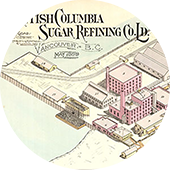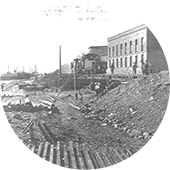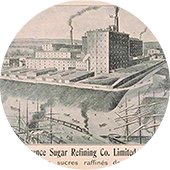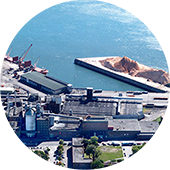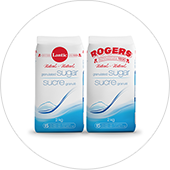History
Lantic Inc. came into existence after the merger of Lantic Sugar Limited and Rogers Sugar Ltd. in June 2008 which resulted in the successful establishment of Lantic Inc. today.
Lantic Sugar
Lantic Sugar has its roots in the Acadia Sugar Refining Co., a Scottish corporation, originally formed from a consolidation of three refinery operations in Nova Scotia and succeeded in 1912 by Atlantic Sugar Refineries when it built a cane sugar refinery in Saint John, New Brunswick.
St. Lawrence Sugar’s original cane refinery was built on the shores of the St. Lawrence river in 1888. Over the years, the building and processing facilities were frequently upgraded.
In 1981, Lantic Sugar began a program of diversification and rationalization that culminated in the purchase of St. Lawrence Sugar in Montreal in 1984. In 2000, Lantic consolidated its refining operations in Montreal and closed the Saint John plant. At the same time, the company reinvested in the Montreal facility, with a $120 million expansion and upgrade that doubled the plant’s capacity.
Rogers Sugar
Rogers Sugar was established in 1890 by the entrepreneurial B. T. Rogers. Recognizing the high cost of transporting refined sugar by rail from Montreal to Vancouver, Rogers seized the opportunity for the west coast to refine its own sugar. Vancouver was strategically located to access raw sugar shipments from Pacific origins and send refined sugar to Canada's western population centres. Rogers' refinery was Vancouver's first major industry not based on logging or fishing. The Vancouver refinery is an efficient, productive facility with several million dollars invested in it annually in maintenance and capital projects. Also see: History of Rogers Sugar.
Rogers' involvement in the beet sugar industry dates back to the 1930's with factories at Raymond and Picture Butte in Alberta. Rogers' Winnipeg plant operated from 1940, but was closed in 1997 as a result of restricted access to the US market. Today's remaining operation is in Taber, Alberta, built in 1950. A $40 million expansion completed in 1999 increased this plant’s capacity by 50%.


